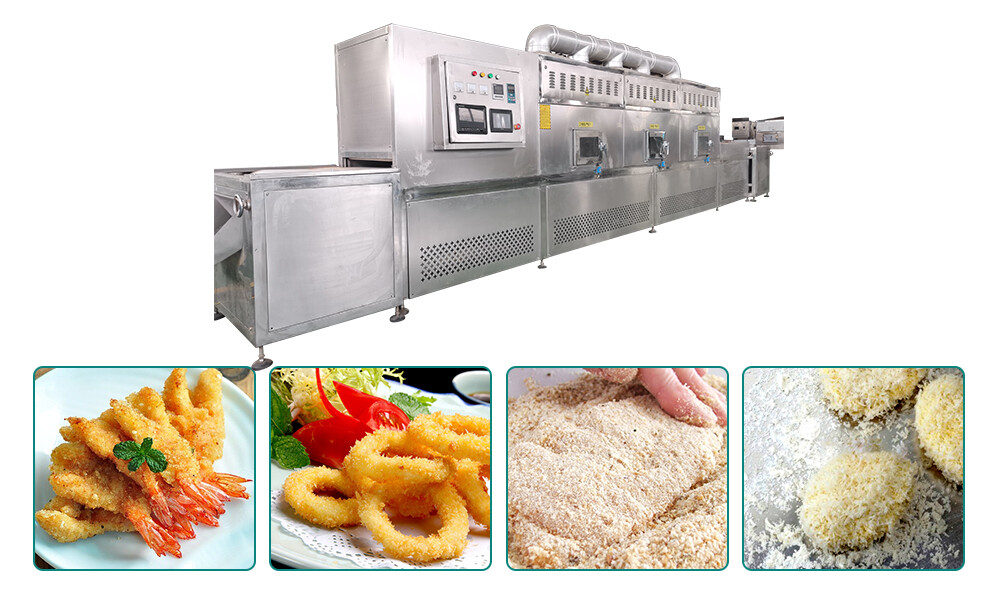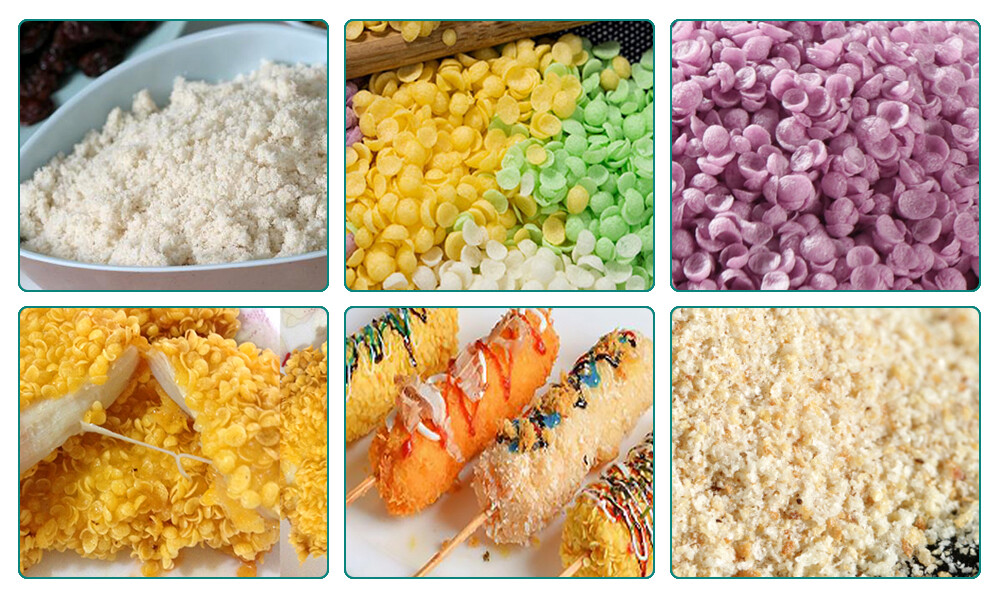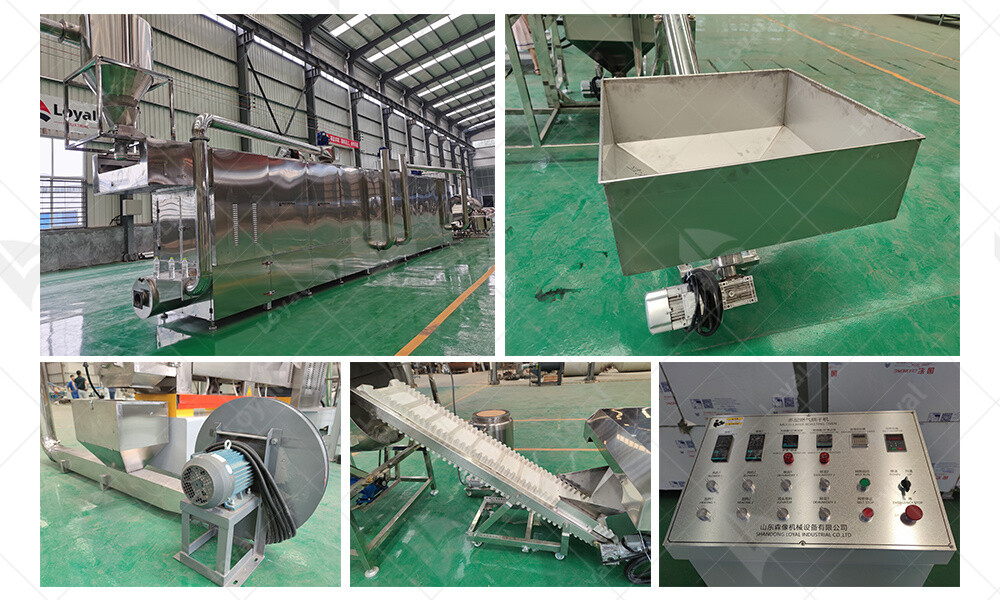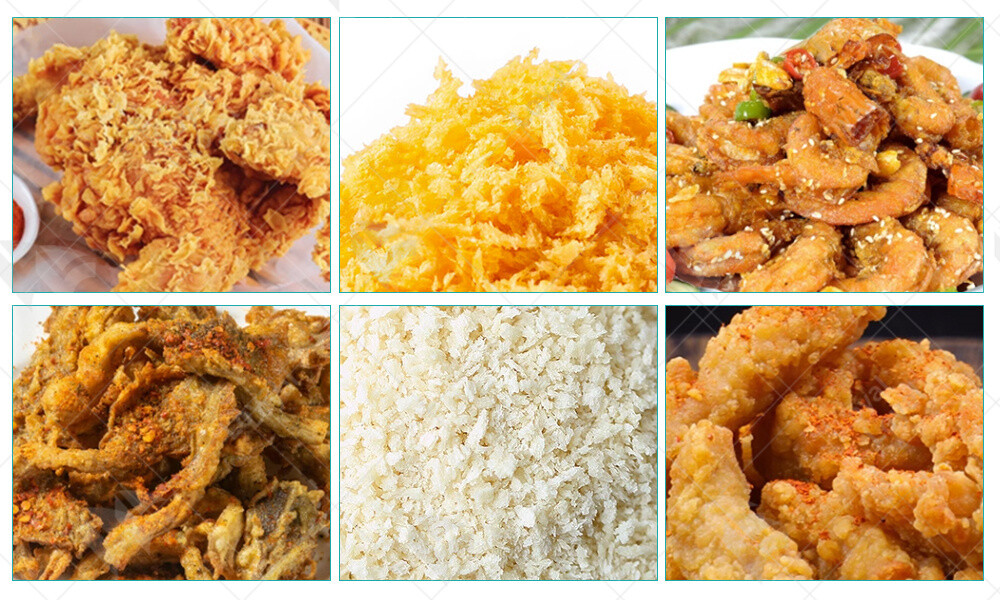Everything you Need to Know About Continuous Automatic Bread Crumb Making Plant
Introduction to Continuous Automatic Bread Crumb Making Plant
The Continuous Automatic Bread Crumb Making Plant is a pivotal innovation in the food machinery industry. This advanced system is designed to streamline the production of bread crumbs, ensuring efficiency, consistency, and high-quality output. As the demand for bread crumbs increases across various culinary applications, the adoption of a continuous automatic plant becomes essential for meeting industrial-scale needs.
The plant operates on a seamless production line, integrating various stages from bread processing to crumb production. This not only reduces manual labor but also minimizes production time, ensuring a steady supply of bread crumbs. The automated nature of the plant enhances precision, allowing for uniform crumb size and texture, which is crucial for meeting diverse customer requirements.
Investing in a Continuous Automatic Bread Crumb Making Plant provides numerous benefits, including cost reduction, improved hygiene, and enhanced product quality. By leveraging advanced technologies and automation, food manufacturers can achieve higher productivity levels while maintaining stringent quality standards. This plant is particularly advantageous for large-scale producers aiming to optimize their operations and stay competitive in the market.

Key Components of a Bread Crumb Making Plant
Component | Description |
Bread Preparation Unit | Handles the initial processing of bread, including slicing and drying. Ensures bread is in optimal condition for crumb production. |
Grinding System | Utilizes high-precision grinders to break down bread into uniform crumbs. Offers adjustable settings for different crumb sizes and textures. |
Sieving and Sorting Unit | Separates crumbs based on size and quality. Ensures only the desired crumb size is forwarded for packaging or further processing. |
Continuous Conveyor System | Automates the movement of bread and crumbs through various stages. Ensures a consistent flow and reduces manual handling. |
Heat Treatment Section | Applies controlled heat to dry and toast the crumbs, enhancing their texture and shelf life. |
Quality Control Sensors | Monitors the production process in real-time. Detects any deviations in quality, allowing for immediate adjustments. |
Packaging Unit | Automates the packaging of finished bread crumbs. Ensures hygienic packing and extends the product's shelf life. |
Control Panel | Centralized system for monitoring and controlling the entire plant. Features user-friendly interfaces and advanced software for precise operation management. |
By incorporating these components, the Continuous Automatic Bread Crumb Making Plant ensures a streamlined, efficient, and high-quality production process. Each element plays a critical role in maintaining the overall functionality and output quality, making this plant a vital asset for any industrial food manufacturer.

How Continuous Processing Works
Continuous processing in a Continuous Automatic Bread Crumb making Plant is a sophisticated method designed for efficient production of high-quality bread crumbs in large quantities. This advanced system integrates precision engineering and automation to streamline the production process. Here’s how it works:
Ingredient Mixing and Feeding: In the initial stage, dry ingredients such as flour, yeast, and seasoning are carefully measured and mixed in precise proportions. This mixture is then fed into the continuous processing line through automated feeders. The consistency and uniformity of the mix are critical to ensure consistent quality in the final product.
Extrusion and Cutting: Once the mixed dough reaches the extrusion chamber, it undergoes controlled extrusion through specially designed dies. These dies shape the dough into the desired breadcrumb form, whether it’s coarse or fine. Simultaneously, automated cutting mechanisms precisely slice the extruded dough into uniform breadcrumb pieces of specified length.
Drying and Toasting: The freshly cut breadcrumbs then enter a continuous drying and toasting process. This stage involves passing the breadcrumb pieces through a series of drying ovens equipped with conveyor belts. Controlled heat and airflow gradually remove moisture from the breadcrumbs while toasting them to achieve the desired color and texture. This step is crucial for enhancing flavor and extending shelf life.
Cooling and Packaging: After toasting, the breadcrumbs undergo rapid cooling to stabilize their temperature and prevent moisture retention. This is typically achieved through integrated cooling conveyors or chambers designed to rapidly reduce the breadcrumb temperature. Once cooled, the breadcrumbs are automatically directed to packaging units where they are weighed, packed into bags or containers, and sealed for distribution.
The continuous processing method not only ensures consistent quality and efficiency but also minimizes manual handling and production downtime. Advanced control systems monitor each stage of the process, allowing for real-time adjustments to optimize production parameters and maintain product uniformity.

Types of Bread Crumb Making Machines
In a Continuous Automatic Bread Crumb Making Plant, various machines are employed to perform specific tasks. Here is a detailed table of the primary types of bread crumb making machines:
Machine Type | Description | Key Features |
Continuous Mixer | Mixes and kneads ingredients to form a uniform dough | High-speed mixing, consistent dough quality, automated ingredient feeding |
Continuous Baking Oven | Bakes the dough into bread at a consistent rate | Temperature control, energy-efficient, uniform baking |
Cooling Conveyor | Cools the baked bread to the right temperature for further processing | Adjustable speed, consistent cooling, prevents moisture retention |
Crusher | Breaks down the cooled bread into crumbs | Adjustable crushing settings, uniform crumb size, high throughput |
Sieving Machine | Sorts crumbs into different sizes according to specifications | Multiple sieve sizes, efficient sorting, easy to clean and maintain |
Packaging Machine | Packages the finished bread crumbs into bags or containers | Fast packaging speed, contamination prevention, customizable packaging options |
These machines work together to create a streamlined and efficient Continuous Automatic Bread Crumb Making Plant. Each machine is designed with specific features to ensure the highest quality of bread crumbs, meeting the industrial standards required by food manufacturers.

Design and Engineering Considerations
The design and engineering of a Continuous Automatic Bread Crumb making Plant are crucial to its performance and longevity. Manufacturers focus on several key aspects to ensure optimal functionality and efficiency:
High-Capacity Extrusion System: At the heart of the plant lies a robust extrusion system capable of processing large quantities of bread into uniform crumbs. This system is engineered to handle various types of bread without compromising on consistency.
Precision Sizing and Cutting Mechanism: A precision sizing and cutting mechanism ensures that the bread crumbs produced meet exact specifications in terms of size and texture. This is achieved through advanced blade technology and adjustable settings.
Automated Drying and Toasting: To achieve the desired texture and shelf life, the plant incorporates automated drying and toasting processes. This ensures that the bread crumbs are evenly dried and toasted to perfection, ready for packaging.
Integrated Control System: The plant is equipped with an integrated control system that monitors and regulates each stage of production. This includes temperature control, conveyor speed, and ingredient dispensing, all aimed at maintaining consistency and quality.

Operational Workflow and Best Practices
Understanding the operational workflow and implementing best practices are essential for maximizing the efficiency and output of a Continuous Automatic Bread Crumb making Plant.
Raw Material Handling: The process begins with loading the raw bread into the feeder system, where it is carefully transported into the extrusion unit. It's crucial to ensure consistent feed to maintain production flow.
Extrusion and Cutting: As the bread passes through the extrusion system, it undergoes precise cutting into uniform crumbs. Adjustments in cutting parameters allow for customization according to client specifications.
Drying and Toasting: Post-cutting, the bread crumbs enter the drying and toasting chambers, where controlled heat and airflow achieve the desired texture and flavor profile. Monitoring these parameters ensures quality consistency.
Packaging and Quality Control: Finally, the dried and toasted bread crumbs are conveyed to packaging stations where they are sealed in appropriate containers. Quality control checks throughout the process guarantee adherence to industry standards.

Safety Measures in Breadcrumb Production
Breadcrumb production is a precise process in the realm of food machinery, emphasizing both efficiency and safety. Breadcrumb Crushing Production involves several critical safety measures to ensure product integrity and worker well-being.
Firstly, the machinery used in Breadcrumb Crushing Production must adhere to stringent safety standards. This includes regular maintenance to prevent malfunctions that could compromise worker safety or product quality. Manufacturers are continually innovating to integrate advanced safety features into breadcrumb crushing machines, such as emergency stop mechanisms and protective guards.
Secondly, training and supervision are paramount. Operators handling breadcrumb crushing machines should undergo comprehensive training to operate the equipment safely and efficiently. This training covers not only machine operation but also maintenance procedures and emergency protocols. Supervisors play a crucial role in ensuring that operators adhere to safety guidelines at all times.
Thirdly, personal protective equipment (PPE) is mandatory. Workers involved in breadcrumb production must wear appropriate PPE, including gloves, safety goggles, and in some cases, ear protection. This equipment not only safeguards against physical injury but also protects against potential allergens or contaminants present in the breadcrumb processing environment.
Lastly, maintaining a clean and organized workspace is essential for safety. Proper sanitation practices mitigate the risk of cross-contamination and ensure a hygienic production environment. Regular cleaning schedules and sanitation audits help uphold these standards, contributing to both product safety and regulatory compliance in Breadcrumb Crushing Production.

Future Trends in Breadcrumb Processing
As technology advances, the future of breadcrumb processing in food machinery is poised for innovation and efficiency improvements. Breadcrumb Crushing Production is no exception, with several emerging trends shaping the industry's landscape.
One significant trend is the integration of automation and robotics. Automated systems streamline breadcrumb production processes, from ingredient mixing to final crushing stages. Robotics enhance precision and consistency while reducing labor costs and human error, making production more efficient and scalable.
Another trend is the emphasis on sustainability. Manufacturers are increasingly adopting eco-friendly practices in breadcrumb production. This includes optimizing energy use in machinery, reducing waste generation, and exploring biodegradable packaging solutions. Sustainability initiatives not only appeal to environmentally conscious consumers but also align with global efforts towards greener manufacturing practices.
Furthermore, advancements in machine learning and AI are transforming breadcrumb processing. AI algorithms can analyze production data in real-time, optimizing production parameters for improved efficiency and quality control. Predictive maintenance powered by AI also minimizes downtime by detecting potential equipment issues before they escalate.
Lastly, there is a growing demand for customizable breadcrumb solutions. Food manufacturers seek versatile machinery capable of producing breadcrumbs of varying textures and sizes to meet diverse consumer preferences. This trend drives innovation in machine design, focusing on flexibility and adaptability to cater to evolving market demands.

Innovations in Bread Crumb Making Technology
In the realm of industrial food machinery, advancements in breadcrumb production technology have revolutionized the efficiency and quality standards of the process. Breadcrumb crushing production has undergone significant enhancements through innovative technologies designed to optimize every stage of the manufacturing process.
Modern breadcrumb making machines integrate state-of-the-art grinding mechanisms that ensure precise granularity and consistency. These machines are equipped with robust blades and sieves, specifically engineered to handle various types of bread and achieve the desired texture. The incorporation of automated controls not only enhances operational efficiency but also maintains uniformity in breadcrumb size, crucial for meeting stringent quality specifications in food production.
Moreover, recent innovations have focused on sustainability, with manufacturers developing breadcrumb machines that reduce energy consumption and waste generation. These eco-friendly designs not only align with global environmental standards but also offer cost-saving benefits to food producers.

Case Studies and Industry Applications
The application of advanced breadcrumb crushing production technologies spans across diverse sectors within the food industry, showcasing its versatility and impact. In bakery operations, for instance, precise breadcrumb production is essential for creating consistent coatings on various baked goods, from chicken nuggets to schnitzels.
In the frozen food sector, breadcrumb crushing machines play a pivotal role in enhancing product quality and shelf life. By ensuring uniformity in breadcrumb texture and size, manufacturers can achieve better adherence of coatings on frozen products, thereby improving overall consumer satisfaction.
Furthermore, the pet food industry has also embraced breadcrumb production technology to enhance the palatability and nutritional value of pet treats. Through tailored equipment solutions, manufacturers can customize breadcrumb sizes to meet specific dietary requirements, ensuring pets receive optimal nutrition in every bite.
In conclusion, breadcrumb crushing production technology continues to evolve, driven by innovations that prioritize efficiency, quality, and sustainability across various applications within the food manufacturing landscape. As industry demands grow, so too does the sophistication of breadcrumb making machinery, reaffirming its pivotal role in shaping the future of food production.

Reference
1.Baker Perkins - bakerperkins.com
2.GEA Group - gea.com
3.Heat and Control - heatandcontrol.com
4.Hosokawa Micron - hosokawamicron.com
5.Fritsch Group - fritsch-group.com












